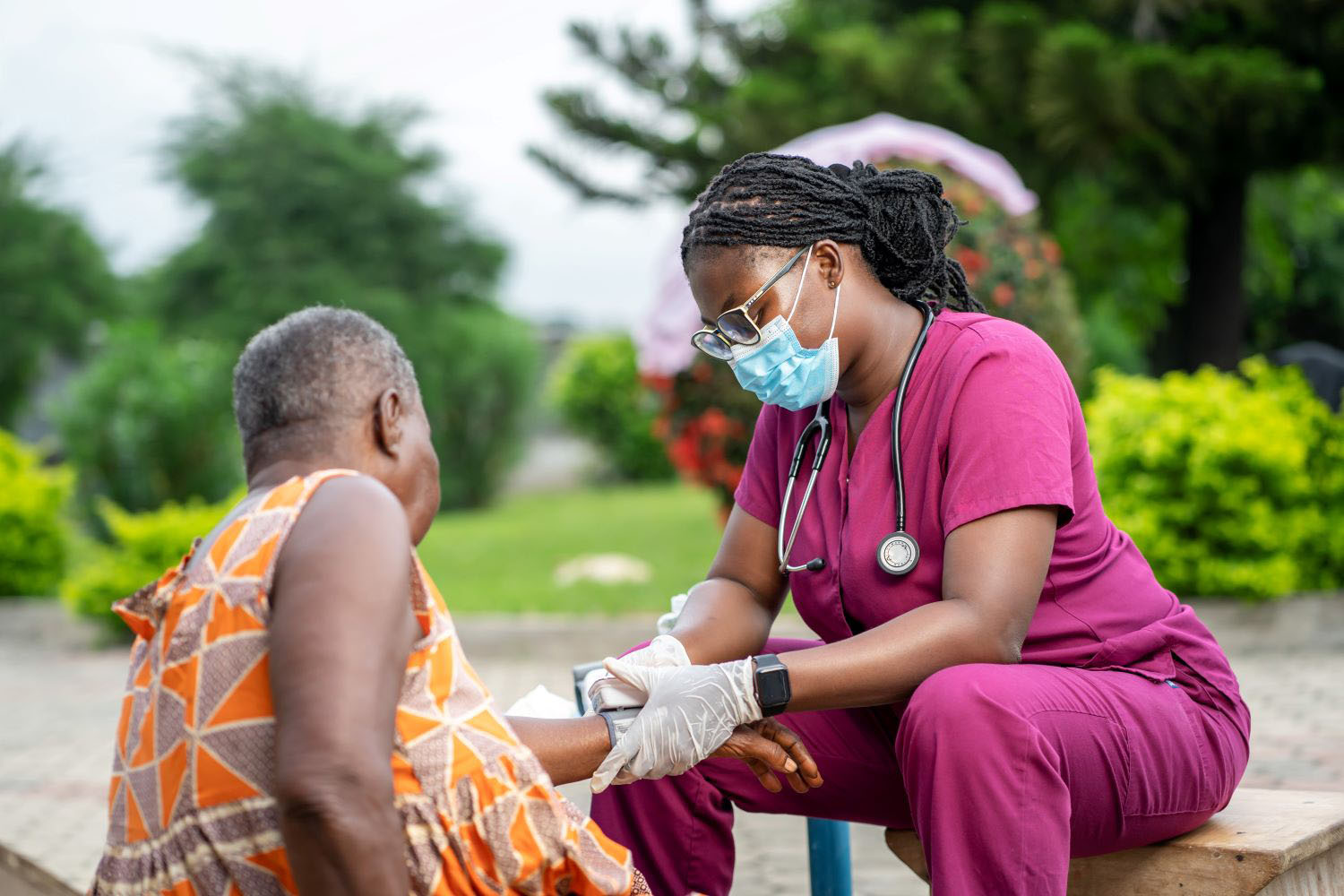Recommended

Blog Post
Yesterday, the World Health Organization (WHO) published new guidance aiming to support government officials as they negotiate and implement international agreements on health worker mobility. In an era characterized as a “global scramble” for health workers, what does this guidance say and how can it help shape migration partnerships going forward?
The “global scramble” for health workers
The mobility of health workers is on the rise. Between 2006 and 2016, there was a 60 percent increase in the international migration of health workers to OECD countries, a trend which saw a further acceleration during the COVID-19 pandemic. Today, approximately a quarter of doctors and 16 percent of nurses in the OECD are foreign-born. Similar trends can be seen outside the OECD. The WHO’s National Health Workforce Accounts show that more than one in five doctors (in 37 countries) and more than one in five nurses (in 30 countries) trained abroad.
Countries of destination are opening new mobility corridors and providing ever greater incentives, in order to plug workforce and skills gaps. While such mobility can be beneficial to the migrant workers and their countries of destination, it risks exacerbating workforce vulnerabilities in the health systems of the countries of origin. This raises concerns about depletion of scarce human resources for health in these health systems, hindering equitable provision of essential health services.
These issues are not new. In 2010, the WHO adopted a global Code of Practice (‘the Code’) to improve governance of international health worker mobility. It recommended that migration from countries with a “critical shortage” of health workers be facilitated only through agreements negotiated by ministries of health, to ensure health considerations would remain front and center. These agreements, whether bilateral or regional, were meant to provide ‘mutual benefits’ for countries of destination and origin. For countries of origin, this meant investments in education, training, and infrastructure, to offset the cost of losing trained health workers and replace much-needed capacity.
Yet progress against these goals has been slow. Some countries of origin are training more health workers than they are financially able to employ, despite having a shortage in their own health systems. Ministries of labor and finance may see expanded emigration as a way to reduce a labor supply challenge and receive remittances. In some contexts, ministries of health may not have enough power to argue for health system investments in exchange, let alone negotiate and implement beneficial agreements. And far more health worker migration takes place outside of the confines of agreements, making it hard to regulate or to even accurately track.
These dynamics place countries of destination at an advantageous position compared to countries of origin. Despite the fact that countries of destination profit from health worker migration, examples of them providing tangible mutual benefits to countries of origin are difficult to find. The Code is non-binding and therefore its provisions may not be fully implemented. Yet the COVID-19 pandemic proved that nothing happens in isolation. Weak health systems in countries of origin jeopardize global health security and the stability of the global economy. Investing in such systems is therefore not just an ethical imperative, it's also practical and in every country’s self-interest.
Shaping health worker migration
In 2022, during the three-yearly reporting on the Code implementation, WHO member states requested support to develop bilateral and regional agreements. In response, the WHO and OECD (through the Working for Health programme) developed guidance to help countries of origin and destination alike create a new generation of fair, ethical, and beneficial health worker mobility agreements that prioritize the right to health of all people, everywhere.
To inform the guidance, the WHO convened a Technical Expert Group of 15 experts from all WHO regions, including experts from CGD. The WHO also carried out a literature review focused on the impact of government agreements related to health worker migration, reviewed the texts of 37 health worker mobility agreements, and conducted key stakeholder interviews.
Published today, the guidance provides policy and implementation guidance to inform the conceptualization, development, and implementation of health worker mobility agreements. Such agreements should contribute to workforce sustainability, universal health coverage, and health security in both countries of origin and destination, in addition to safeguarding worker welfare. The guidance provides a tool for the concrete application of the Code, and will therefore hopefully provide countries with explicit guidance on how to ensure ethical health worker mobility.
All discussions should start with a national health system needs assessment, including a health labor market analysis, to provide information on workforce gaps and priority areas requiring intervention. These can range from workforce education, distribution, and working conditions to infrastructure, information systems, and service delivery tools. Government agreements can then be developed to address specific needs of both countries, which should be explicit in the agreement. The primary focus of the agreement may therefore be diverse—labor, economy, trade, health, education—requiring a coherent country position on health worker migration in alignment with broader national policies.
Adequate stakeholder consultation at the different stages of the development of the agreement is essential to explore synergies and address concerns. For example, involvement of the ministry of health in the negotiation and implementation of any agreement with a health workforce mobility component is crucial to assess the impact on national health service delivery and to advance the health agenda. Depending on the type of agreement, government entities across education, foreign affairs, health, immigration, labor, and trade sectors, as well as diaspora groups, educational institutions, employers, migrant rights associations, professional associations, trade unions, private sector actors, and regulators, should be consulted.
Finally, implementation and evaluation data are crucial to assess whether objectives were met, track the impact of the agreement on health systems of origin and destination countries (and on workers), and inform future agreements and policies. The contents of the existing agreements are very diverse and many of the texts are high-level, thus requiring an implementation plan to be developed by technical teams. Yet such plans typically are not publicly available, which makes it difficult to know the extent to which the agreement was implemented and its objectives met. Greater transparency, and the gathering of better data, could help identify and inform best practices more widely.
Where to next?
Given substantial shortages and labour market imbalances across origin and destination countries, it is likely that health worker mobility will both continue and even increase in the future. Minimizing the negative effects and maximizing opportunities of such mobility requires collaboration between countries of origin and destination, and a collective focus on improving health systems.
This new guidance can be used by actors involved in the development, negotiation, implementation, monitoring, and evaluation of agreements related to health worker mobility, keeping health system priorities at the forefront. The Code monitoring mechanism has already contributed to greater transparency regarding agreements. Ongoing reporting will provide insights into its uptake and identify additional promising practices in the management of international health worker mobility.
As COVID-19 reminded us, we live in a very interconnected world: weak health systems anywhere can threaten global health security and the global economy. Negotiating and implementing agreements which provide tangible mutual benefits is not only ethical: it is in the best interests of all countries, including countries of destination.
Disclaimer
CGD blog posts reflect the views of the authors, drawing on prior research and experience in their areas of expertise. CGD is a nonpartisan, independent organization and does not take institutional positions.
Image credit for social media/web: USAID/CGutierrez







